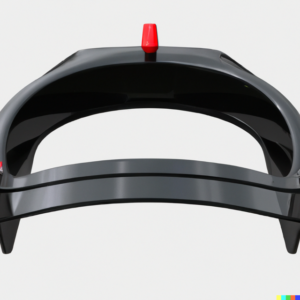Why Do F1 Drivers Get Weighed

If you’ve watched a Grand Prix, you’ve probably noticed that the drivers get weighed after their race. Now, this isn’t about vanity; it is a very important part of the sport. You may only see the drivers on the podium getting weighed, but all the drivers get weighed behind the scenes before and after the race.
Why is Weight Important in F1?
Weight is vital in Formula 1 because lighter cars will go much faster than heavier cars. While they do their best to design the cars to be light, the safety measures that they put in every season can make them heavier.
This also means that a driver’s weight plays an essential role in their success as the drivers aren’t supposed to create too much excess weight.
A driver can lose up to two seconds due to too much weight, and that counts for a lot in a sport where even milliseconds make a huge difference between a win and a loss.
In fact, the Federation Internationale de L’Automobile (FIA) has a rule that the minimum weight limit for a driver and their seat is 176 lbs.
If the seat and driver weight does not meet this minimum, excess weight must be added to the cockpit in the form of ballasts. This can be an advantage for lighter drivers because then their team can strategically place the ballasts within the cockpit.
This rule is in place for the driver’s safety. Before this rule was in place, teams preferred lighter drivers over heavier drivers to ensure that there wouldn’t be any unnecessary weight added to the car.
This had a negative impact on the health of drivers as they were pushed to lose and maintain unhealthy weights by losing lots of body fat. Lighter drivers also had an advantage over heavier and taller drivers who weren’t driving at peak physical shape.
With this regulation in place, the FIA has made it so that all drivers will be at a healthy weight to handle the physical exertion of the speed of the car as well as strong enough to handle such a powerful machine.
Why Do F1 Drivers Get Weighed Before A Race?
F1 drivers are weighed regularly for both medical and technical reasons, and it’s essential that they’re weighed both before and after a race for the same reason. Both measurements are necessary to ensure that the teams are respecting the rules set by the FIA.
Medical
F1 drivers are weighed before a race so that their teams are able to keep track of how much weight they lose per race. Due to the tremendous force exerted on the body while the car is hurtling at such high speeds, as well as the heat in the cockpits, F1 drivers have been known to lose weight during a race.
Most of the weight loss during the race is due to the drivers’ sweat, which is unsurprising given that the cockpit can reach up to 122°F during a race. On top of this, the race suits are made of heavy material, and underneath them, many drivers wear underwear, vests, and balaclavas made from the same material.
Technical
From a technical standpoint, the FIA has a minimum weight requirement that must be met for both the driver and the car. One of the rules is that a car’s minimum weight, with a driver inside it, should be 1755 lbs. The driver’s weight is important to make sure that any ballasts needed to meet regulations are put into the car before the race begins.
This rule excludes the weight of the fuel, but it does include the weight of the four tires. This rule is in place to ensure that everyone has an even playing field (or racing track). No team can gain an advantage by using a ridiculously light car or make their car lighter by not including the necessary safety equipment.
Why Do F1 Drivers Get Weighed After A Race?
While the weight of the car also matters, drivers aren’t weighed together because it’s easier and quicker to do them separately.
Medical
The drivers are weighed immediately after the race before they have a chance to eat or drink anything to get an accurate reading. Combined with the first reading, the medical team is able to accurately see how much weight the driver has lost during the race.
From this, they can see if the driver is losing more weight than normal, which might indicate a health problem or a problem in their strategy. Losing even 2 lbs within a two-hour span is quite a lot in normal circumstances, so it’s important to pay attention in such a physically taxing scenario.
They can also ascertain how to immediately treat the driver and formulate a health and workout plan to get them back to their usual weight. They may also adjust the workout plan if the driver needs to recuperate.
Technical
After every race, the driver and the car are weighed separately, and then the two figures are combined to make sure that they haven’t fallen below the minimum weight during the race. If the driver and the car fall below the weight restrictions, they’re automatically disqualified.
The driver and seat weight also includes the full race suit, including the HANS device, the gloves, and the helmet. All of their equipment counts towards their seat weight because everything that was in the car counts towards the total weight of the car.
The weighing is always done in the presence of an FIA official, and the rules and regulations are set at the start of every season. They may change from season to season, but not usually by much.
FAQs
What’s the average weight of f1 drivers?
Most Formula 1 drivers tend to weigh between 143 lbs and 154 lbs. Of course, they can weigh more than that, but they must still not weigh too much.
How much does a race suit weigh?
A racing suit tends to be thick and heavy because it’s made to be fireproof. It weighs up to 2 lbs.
How much weight do F1 drivers lose during a race?
Depending on how hot the location is, drivers tend to lose anywhere from 4-9 lbs of weight in sweat. The hotter it is outside, the hotter it’ll be inside the cockpit.
Final Thoughts
So, does weight matter in F1? The answer is a resounding yes!
Driver weight can play a significant role in a team’s success, but it can also lead to disqualification if the driver’s weight is below the requirements to compete. It’s important to keep track of how much the drivers weigh before and after each race for their health and to meet the racing regulations.
While having drivers weigh less makes cars lighter, it can negatively impact their health, and making the cars themselves lighter can compromise their overall safety. Weight is a delicate balance here, and every team must find the right one.





